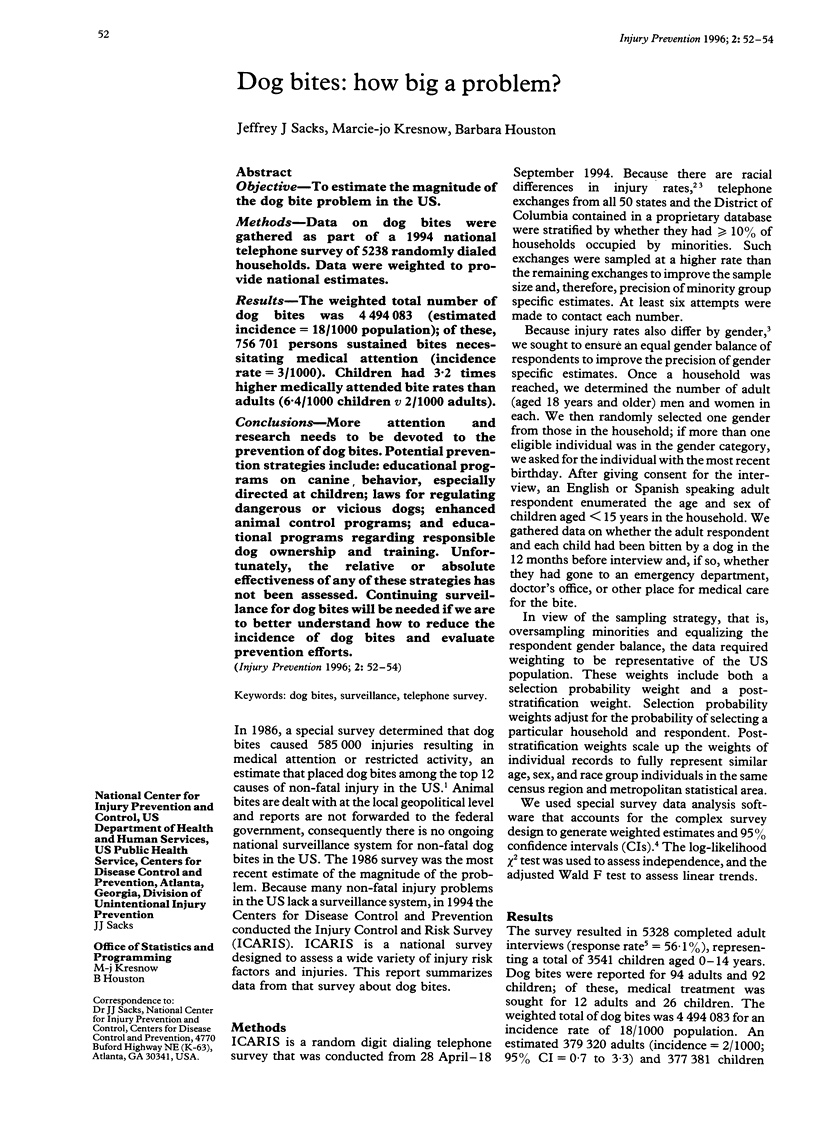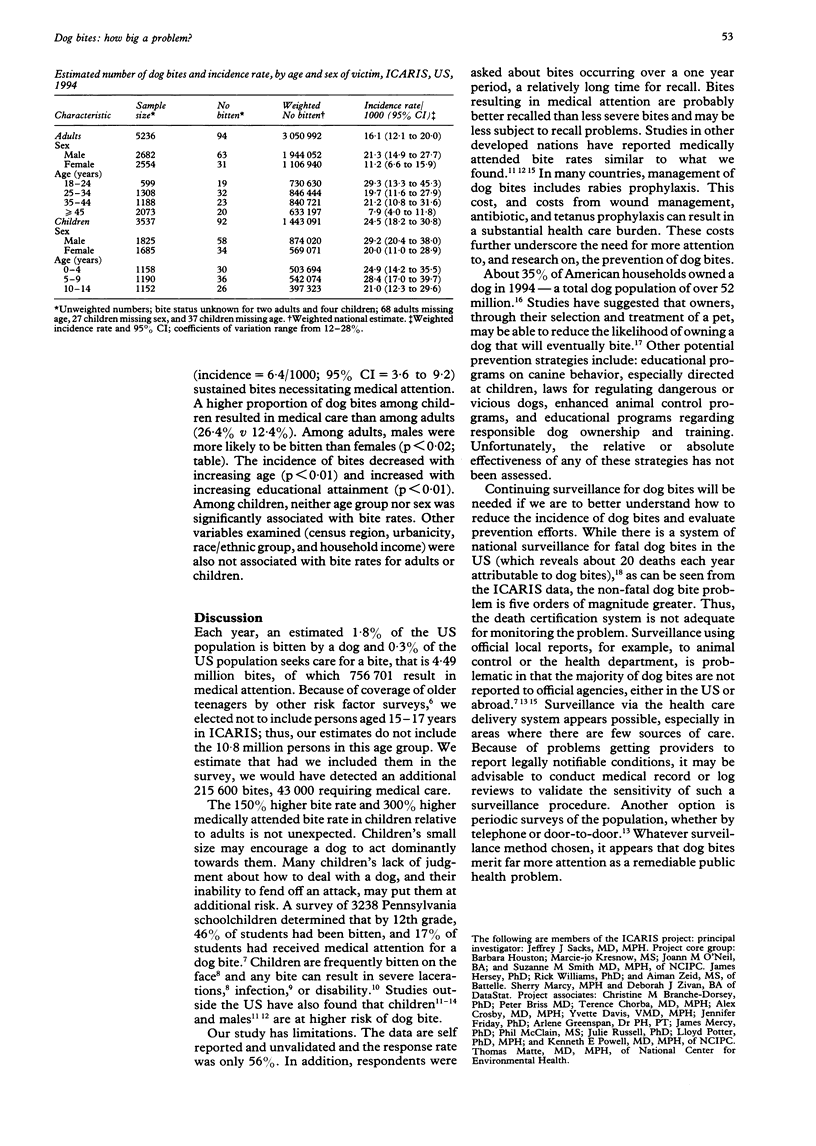Abstract
OBJECTIVE: To estimate the magnitude of the dog bite problem in the US. METHODS: Data on dog bites were gathered as part of a 1994 national telephone survey of 5,238 randomly dialed households. Data were weighted to provide national estimates. RESULTS: The weighted total number of dog bites was 4,494,083 (estimated incidence = 18/1,000 population); of these, 756,701 persons sustained bites necessitating medical attention (incidence rate = 3/1,000). Children had 3.2 times higher medically attended bite rates than adults (6.4/1,000 children v 2/1,000 adults). CONCLUSIONS: More attention and research needs to be devoted to the prevention of dog bites. Potential prevention strategies include: educational programs on canine behavior, especially directed at children; laws for regulating dangerous or vicious dogs; enhanced animal control programs; and educational programs regarding responsible dog ownership and training. Unfortunately, the relative or absolute effectiveness of any of these strategies has not been assessed. Continuing surveillance for dog bites will be needed if we are to better understand how to reduce the incidence of dog bites and evaluate prevention efforts.
Full text
PDF


Images in this article
Selected References
These references are in PubMed. This may not be the complete list of references from this article.
- Beck A. M., Jones B. A. Unreported dog bites in children. Public Health Rep. 1985 May-Jun;100(3):315–321. [PMC free article] [PubMed] [Google Scholar]
- Berzon D. R., DeHoff J. B. Medical costs and other aspects of dog bites in Baltimore. Public Health Rep. 1974 Jul-Aug;89(4):377–381. [PMC free article] [PubMed] [Google Scholar]
- Chomel B. B., Trotignon J. Epidemiologic surveys of dog and cat bites in the Lyon area, France. Eur J Epidemiol. 1992 Jul;8(4):619–624. doi: 10.1007/BF00146385. [DOI] [PubMed] [Google Scholar]
- Eng T. R., Fishbein D. B., Talamante H. E., Hall D. B., Chavez G. F., Dobbins J. G., Muro F. J., Bustos J. L., de los Angeles Ricardy M., Munguia A. Urban epizootic of rabies in Mexico: epidemiology and impact of animal bite injuries. Bull World Health Organ. 1993;71(5):615–624. [PMC free article] [PubMed] [Google Scholar]
- Gershman K. A., Sacks J. J., Wright J. C. Which dogs bite? A case-control study of risk factors. Pediatrics. 1994 Jun;93(6 Pt 1):913–917. [PubMed] [Google Scholar]
- Karlson T. A. The incidence of facial injuries from dog bites. JAMA. 1984 Jun 22;251(24):3265–3267. [PubMed] [Google Scholar]
- Kizer K. W. Epidemiologic and clinical aspects of animal bite injuries. JACEP. 1979 Apr;8(4):134–141. doi: 10.1016/s0361-1124(79)80339-1. [DOI] [PubMed] [Google Scholar]
- Sacks J. J., Sattin R. W., Bonzo S. E. Dog bite-related fatalities from 1979 through 1988. JAMA. 1989 Sep 15;262(11):1489–1492. doi: 10.1001/jama.262.11.1489. [DOI] [PubMed] [Google Scholar]
- Sosin D. M., Sacks J. J., Sattin R. W. Causes of nonfatal injuries in the United States, 1986. Accid Anal Prev. 1992 Dec;24(6):685–687. doi: 10.1016/0001-4575(92)90022-b. [DOI] [PubMed] [Google Scholar]
- Thomas H. F., Voss S. A survey of dog bites in Salisbury. J R Soc Health. 1991 Dec;111(6):224–225. doi: 10.1177/146642409111100604. [DOI] [PubMed] [Google Scholar]
- Wise J. K., Yang J. J. Dog and cat ownership, 1991-1998. J Am Vet Med Assoc. 1994 Apr 15;204(8):1166–1167. [PubMed] [Google Scholar]



